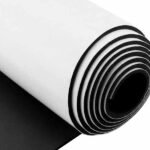Neoprene wetsuits are a staple for water sports enthusiasts. Whether you’re diving, surfing, or engaging in any water activity, these suits provide comfort, insulation, and protection. But like any product, neoprene wetsuits have their strengths and weaknesses. Understanding these can help you make an informed decision.
Neoprene wetsuits offer excellent insulation, flexibility, and durability but come with drawbacks like environmental concerns and maintenance requirements.
Let’s dive into the pros and cons, safety considerations, and how to select the perfect wetsuit for your needs.
What Is a Neoprene Wetsuit?
Neoprene wetsuits are designed to provide thermal insulation and protection during water activities.
A neoprene wetsuit is a garment made from synthetic rubber (neoprene) that insulates the body by trapping a thin layer of water between the skin and the suit, which your body heats to maintain warmth.
This makes them essential for activities in cold or moderate water temperatures.
Key Features of Neoprene Wetsuits
- Thermal Insulation: Keeps the body warm in cool water.
- Buoyancy: Helps users stay afloat.
- Flexibility: Allows freedom of movement for active sports.
- Durability: Resistant to wear from saltwater and UV rays.
What Are the Pros of a Neoprene Wetsuit?
Neoprene wetsuits are popular for good reasons. They offer a range of benefits that enhance the water sports experience.
The pros of neoprene wetsuits include thermal insulation, flexibility, buoyancy, and durability.
These features make them ideal for maintaining comfort and performance in various water conditions.
Benefits of Neoprene Wetsuits
| Benefit | Explanation |
|---|---|
| Insulation | Traps heat, keeping the body warm in cold water. |
| Flexibility | Adapts to body movements for unrestricted activity. |
| Durability | Withstands saltwater, UV rays, and wear. |
| Buoyancy | Helps swimmers and divers stay afloat. |
What Are the Disadvantages of Neoprene Wetsuits?
While neoprene wetsuits have numerous advantages, they also come with some limitations.
The disadvantages of neoprene wetsuits include environmental concerns, limited breathability, and maintenance requirements.
These factors can affect their long-term usability and appeal.
Drawbacks of Neoprene Wetsuits
| Drawback | Explanation |
|---|---|
| Environmental Impact | Traditional neoprene production is not eco-friendly. |
| Maintenance Needs | Requires thorough cleaning and drying after use. |
| Limited Use in Warm Water | May cause overheating in high temperatures. |
| Cost | High-quality neoprene wetsuits can be expensive. |
Is It Safe to Wear Neoprene?
Safety is a primary concern for anyone using gear in potentially extreme environments.
Yes, neoprene is safe to wear as it is non-toxic, hypoallergenic, and provides protection against external elements like cold and abrasions.
It is widely used in wetsuits, gloves, and other protective gear for its safety features.
Neoprene Safety Features
- Thermal Protection: Prevents hypothermia in cold water.
- Abrasion Resistance: Protects skin from scrapes and cuts.
- Non-Toxic Material: Free from harmful chemicals.
Which Activities Are Best Suited for Neoprene Wetsuits?
Neoprene wetsuits are versatile and cater to a variety of water-based activities.
Neoprene wetsuits are best suited for diving, surfing, kayaking, and other activities requiring insulation and flexibility.
They enhance performance while ensuring safety and comfort.
Activities Ideal for Neoprene Wetsuits
| Activity | Benefits of Neoprene Wetsuits |
|---|---|
| Diving | Insulation and buoyancy for underwater exploration. |
| Surfing | Flexibility and abrasion resistance for dynamic movements. |
| Kayaking | Protection against cold water and splashes. |
| Triathlons | Hydrodynamic properties for improved speed. |
How to Choose the Right Neoprene Wetsuit?
Selecting the perfect wetsuit involves considering several factors like thickness, fit, and activity type.
To choose the right neoprene wetsuit, consider water temperature, suit thickness, fit, and additional features like seams and zippers.
These elements determine the comfort and performance of the wetsuit.
Factors to Consider
| Factor | Key Points |
|---|---|
| Water Temperature | Thicker suits for colder water, thinner for warmer. |
| Fit | A snug fit prevents water flushing inside. |
| Seams | Flatlock for warm water, sealed for cold water. |
| Zipper Style | Front or back zippers based on ease of wear. |
Conclusion
Neoprene wetsuits offer a balance of comfort, durability, and insulation, making them a top choice for water sports enthusiasts. While they have some drawbacks, their benefits far outweigh the limitations for most users.
At Szoneier, we specialize in manufacturing high-quality neoprene wetsuits tailored to meet the needs of brands, wholesalers, and retailers. Contact us today to explore our neoprene wetsuit solutions and discover how we can help elevate your product line.











